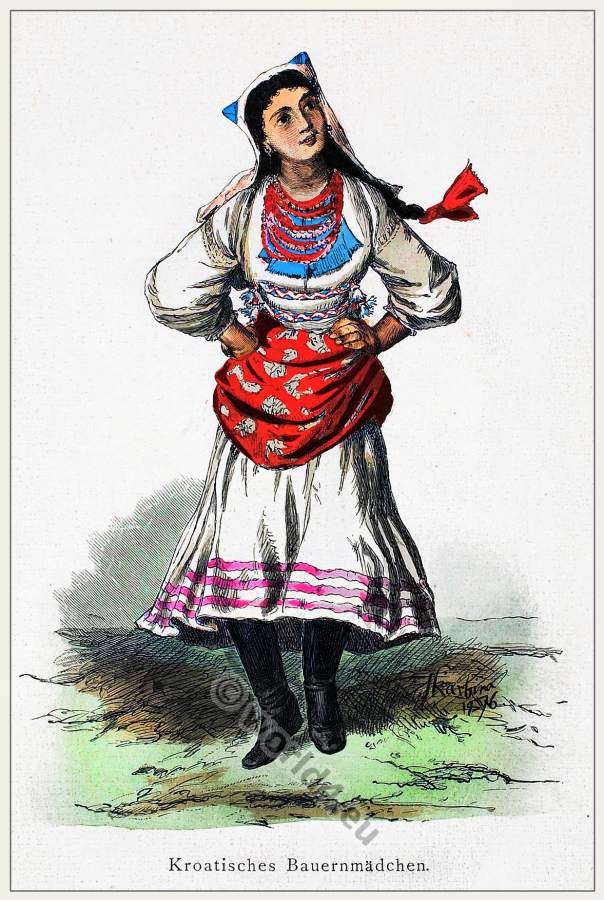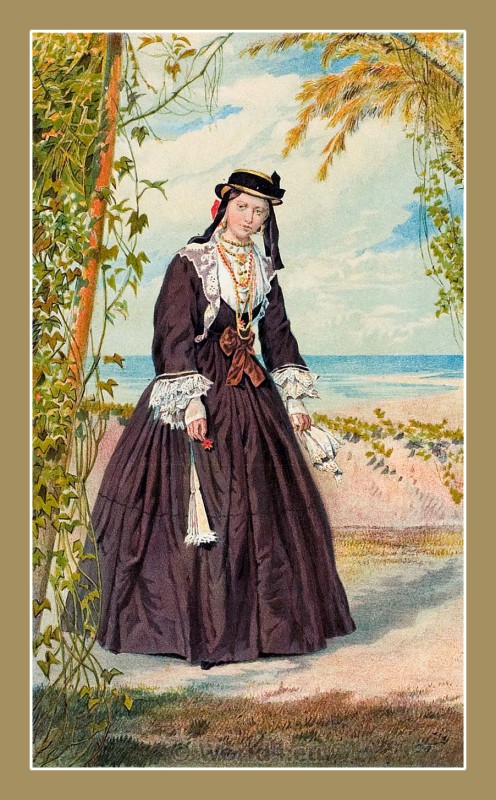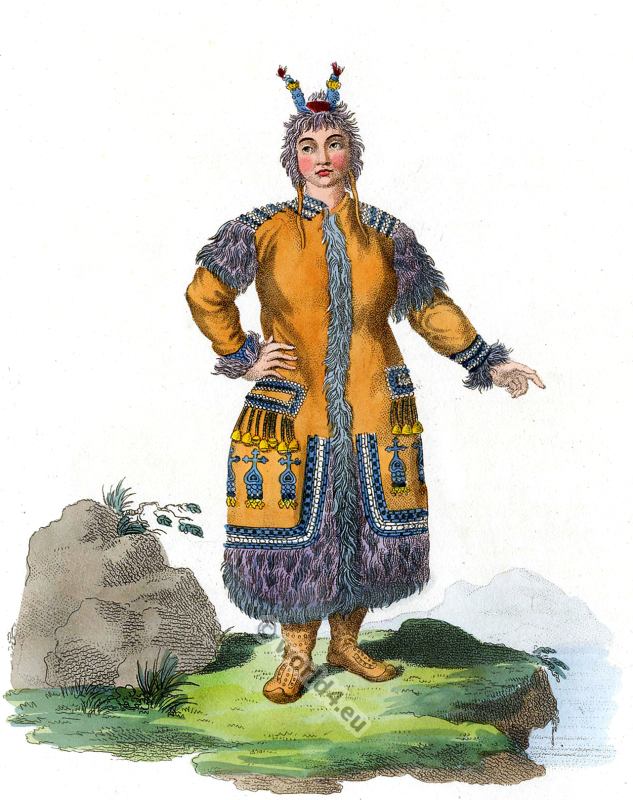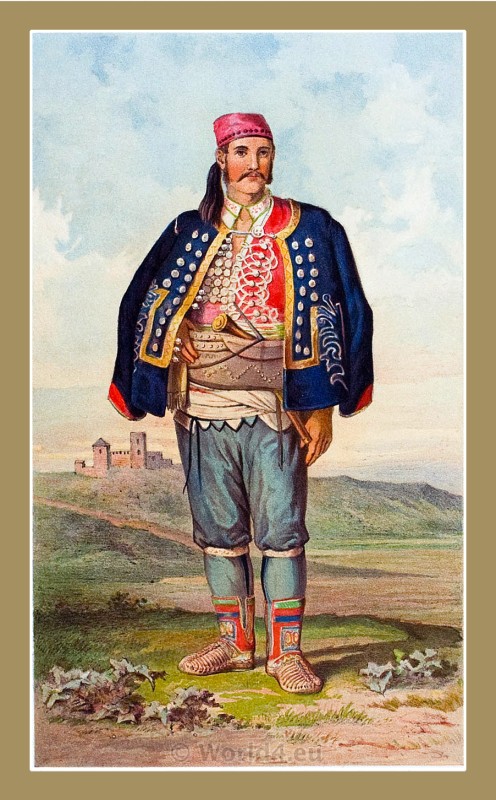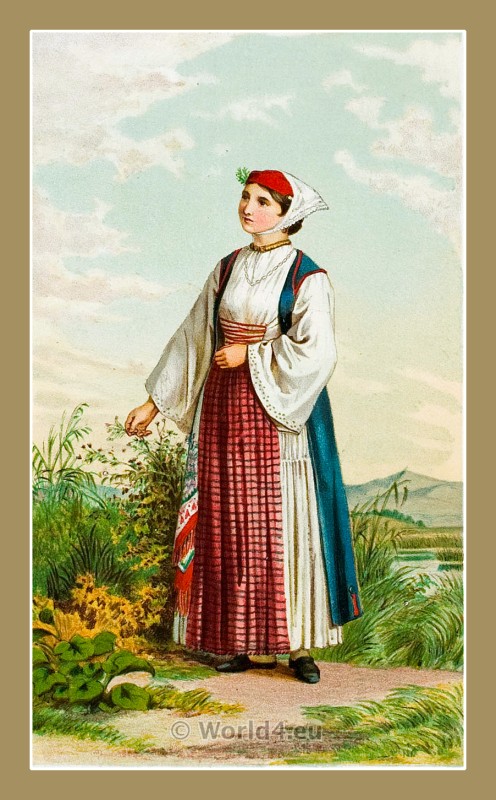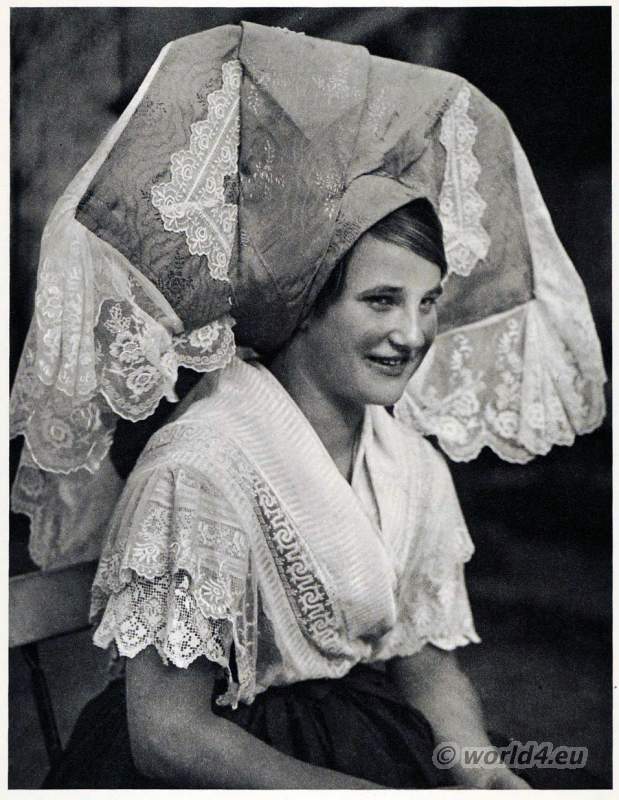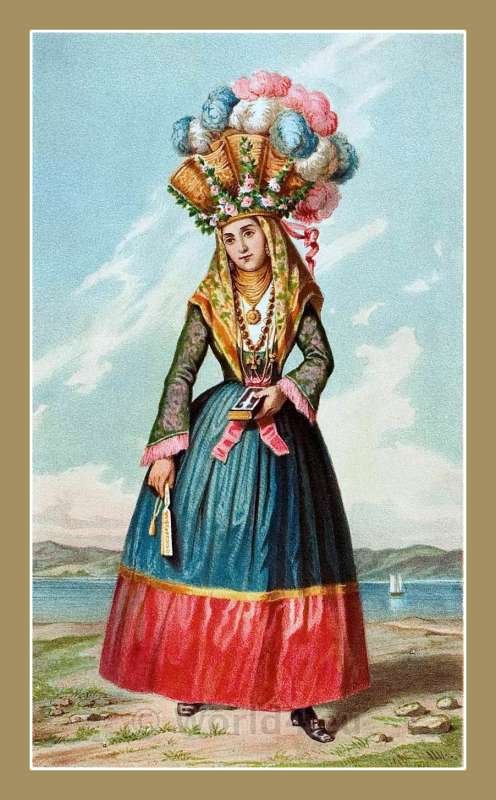
Before the 16th century it was called Trestenicco or Trestenico (Trstenica). Orebić (it. Sabbioncello) is connected by ferries with the town of Korčula, located on the island of the same name.
In the 19th century, Orebić was the hometown of many important captains and one of the largest shipping companies, the Associazione Marittima di Sabioncello, was also based here. A maritime museum also recalls this period when sailors and captains sailed the high seas all over the world, which is still the case today.
The characteristic women’s costumes from Orebić show, among other things, this relationship with seafaring. The costumes of the captain’s wives gave precise information about the social position and wealth of their spouse.
The Franciscan monastery of Our Lady of the Angels is the main attraction of the Dalmatian town. Of medieval origin, it is located near St. Elijah’s Hill, which offers an excellent panoramic view towards the island of Korčula. In the monastery cemetery you can still find the graves of some Italian Dalmatians, who were the original population of the Orebić (Sabbioncello) peninsula.
Girl’s costume from Orebić.
Dubrovnik-Neretva Croatia in 1870.
(DJEVOJKA IZ OREBIĆA)
The girl’s costume from Orebić, a port town and municipality in the Dubrovnik-Neretva county in Croatia on the Dalmatian coast, is probably of greatest interest; the prayer book and fan identify it as a holiday garment, perhaps also as a wedding state; it is worth attempting a more detailed description.
A 25-30 cm high, seemingly straw wickerwork in the form of a basket with many indentations, surmounted by a multitude of white, red and blue feathers, and entwined at the bottom of the forehead by a wreath of roses, which tendril into the indentations like crown tines, sits on the head, which is covered with a rich cloth.
A yellow silk scarf, the triangular tip of which lies just in front on the white bib, a narrow skirt with a blue stripe and a wide red stripe at the bottom, a coherent bodice and a short, green patterned sleeve jacket form the clothing, to which the above-mentioned jewellery of necklaces and the large antique earrings are added.
Source: The Serbs in the Adriatic. Their types and costumes 1870-1878.
Related
Discover more from World4 Costume Culture History
Subscribe to get the latest posts sent to your email.

